Horror of Moroccan earthquake survivors forced to live among remains of those killed and rotting dead animals while they wait for aid – as death toll hits 2,800: ‘We only find dead bodies…the smell of corpses is very strong’
Survivors of Morocco’s deadliest earthquake in 60 years have told of the horror of living next to dead bodies still lying beneath collapsed houses, which began to rot four days after the disaster.
Aziz, a villager from Ijoukak, 16 kilometers from the earthquake epicenter, said: ‘So far we have found no survivors, only the dead buried under the rubble… the smell of corpses is very, very strong. We still have no electricity and no water.’
The death toll has now surpassed 2,800 and is expected to rise further as hopes fade of bringing out those still trapped under piles of rubble after Friday’s magnitude 6.8 earthquake.
Desperate villagers still waiting for help in the hardest-hit areas of the Atlas Mountains reported having to search for survivors on their own, digging with their bare hands to pull the bodies of their neighbors and loved ones from the rubble.
After a fourth night of sleeping outside on Monday, many Moroccans – in makeshift tents or under the stars in the countryside and on the streets of Marrakech – many woke up today still waiting for help.
A victim covered with a sheet is carried to a makeshift grave just dug in Talat N’yakoub

Desperate villagers still waiting for help in the hardest-hit areas of the Atlas Mountains reported having to search for survivors on their own
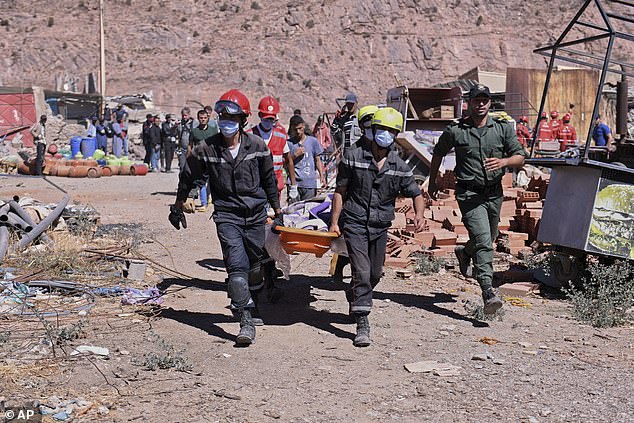
A victim is taken away by rescuers in Talat N’yakoub, Morocco

A group of men carry the body of a local resident who died in the earthquake, to be placed in a freshly dug grave
Because houses in earthquake-affected villages in the High Atlas Mountains are typically made of mudbricks, stone and clay, it is generally more difficult for people to survive in them than in modern buildings destroyed by earthquakes.
“If that all collapses, you don’t have much chance of survival because there are no air pockets,” said Arnaud Fraisse, founder of Rescuers Without Borders.
‘People usually suffocate from the dust.’
Abdelqader Tarfay, the general secretary of Morocco’s National Health Union, said the biggest challenge for medics and rescue teams is still getting trapped people out.
“Then they have to work to remove the remaining bodies from under the rubble so they don’t rot,” he said. Al Jazeera.
Homes, mosques and schools have been decimated, with a religious teacher in the village of Tafeghaghte saying 22 of his students had been killed.
Some residents of the hardest-hit mountain areas criticized the government’s relief efforts, saying that while other communities had received aid, they were left to fend for themselves.
Said Hartattouch said it was understandable why some communities received state aid and others did not, given the sheer scale of the destruction that has killed more than 2,800 people.
Remote hamlets in the areas around Ijoukak are still inaccessible, the Guardian reports, with “huge boulders blocking the roads.”
‘The problem for the Atlas Mountains is that it is big… ‘It is not possible to help everyone’.
The 34-year-old was at work in Marrakech when the magnitude 6.8 earthquake struck.
The moment the earth began to shake, he rushed to his family’s village, more than 90 kilometers away in the High Atlas Mountains, eager to join his mother and two sisters.
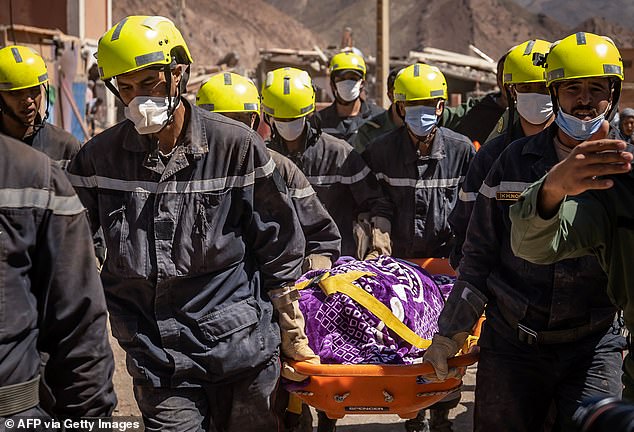
Moroccan rescuers pull a body from the rubble in the village of Talat N’Yacoub in al-Haouz province
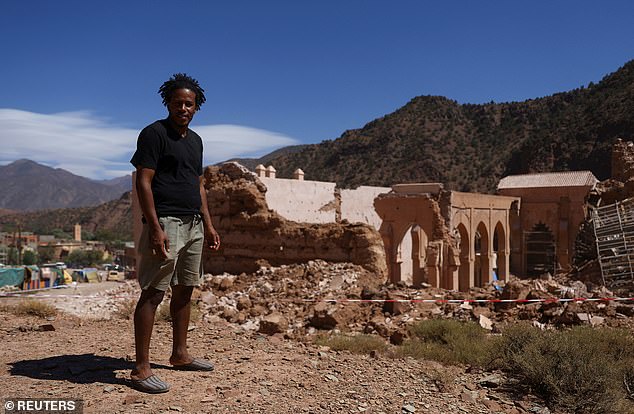
Said Hartattouch, 34, was at work in Marrakech when the magnitude 6.8 earthquake struck
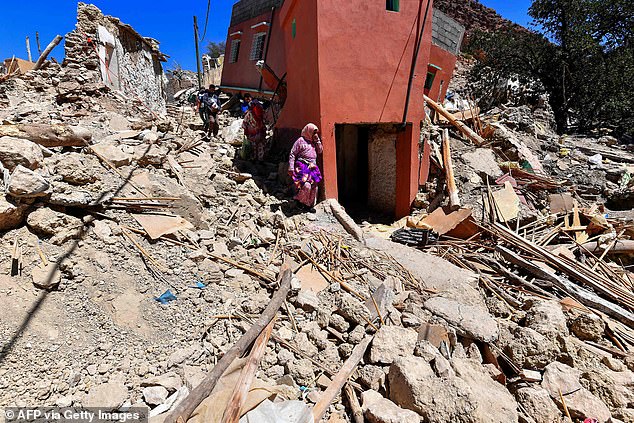
Women react as they walk through the rubble of the village of Imoulas in Taroudant province
When he arrived a few hours later, his parental home was in ruins.
Speaking outside the rubble of the dirt and straw house, Hartattouch said he had sometimes felt like he was in a terrible dream in the days after the earthquake.
“But then you wake up the next day and discover the reality,” he said.
While Hartattouch’s mother and sisters survived, fifteen other people from the tight-knit community of about 100 people died.
They included his uncle, who was buried by a collapsing wall after fleeing his home, and a close family friend who lived next door.
The village of Tinmel is in a state of devastation. The houses have been destroyed and the historic 12th century mosque that lies at the end of the village and attracted tourists from all over the world is now in ruins.
Hartattouch recounted his return to the village, delayed because of a road blocked by a landslide, and described a struggle in his destroyed family home to collect blankets and his mother’s insulin.
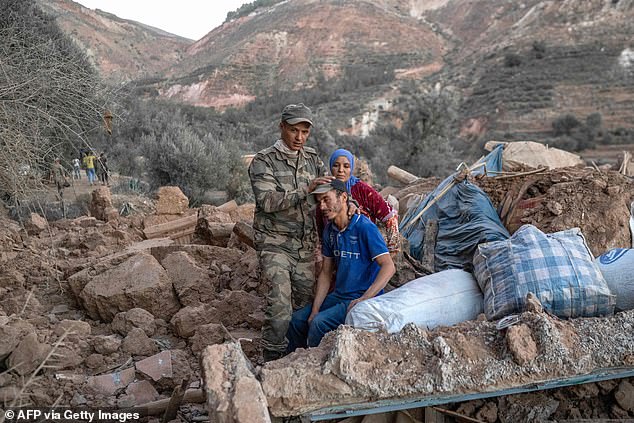
A Moroccan soldier comforts a man sitting on the ruins of a house in the mountainous area of Tizi N’Test
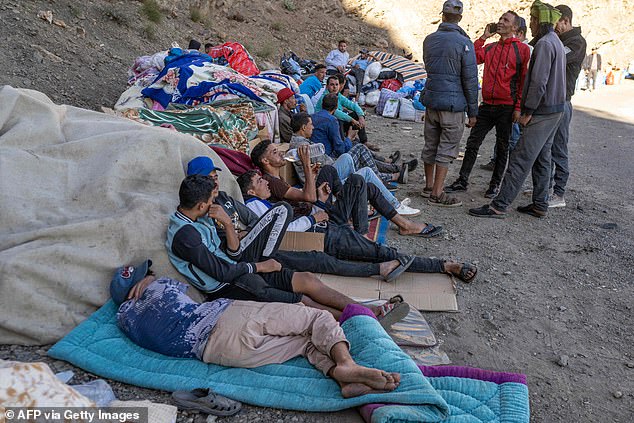
People wait as emergency workers open a road to their village in the mountainous Tizi N’Test area, Taroudant province
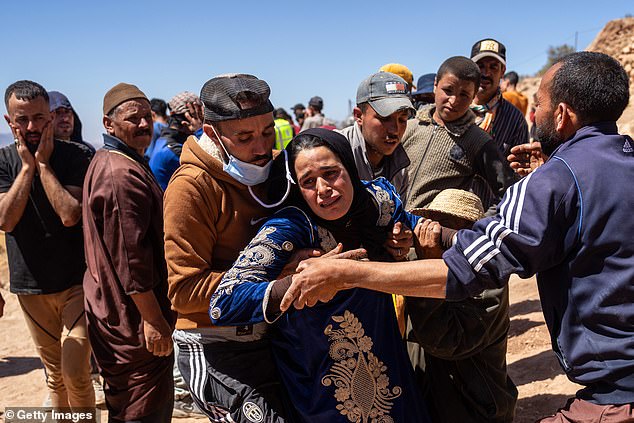
Relatives hold a woman as she is overcome with grief as her husband’s body is pulled from beneath a collapsed house
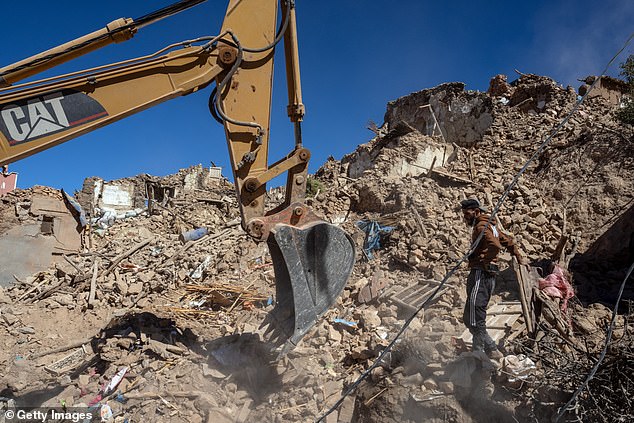
An excavator digs through the rubble of collapsed buildings in Douz on September 11, 2023

Boxes of humanitarian aid are ready to be sent to earthquake-hit Morocco following the deadly earthquake
With nowhere to go, the villagers have been sleeping in the open since Friday’s earthquake.
Residents say the village has received little help from the government and has relied instead on charitable donations. A mother of a 15-day-old baby boy said the child needed formula and medicine.
There is an urgent need for tents to protect people from the falling temperatures at night.
“It’s the beginning of the cold weather, the first day was very tough,” Hartattouch said.
